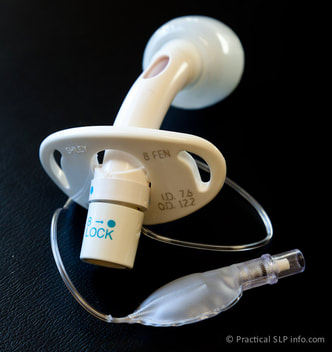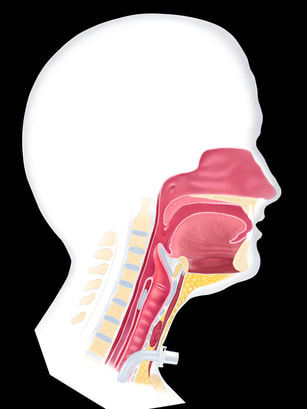A tracheostomy serves to provide an alternate airway, or breathing passage, through the neck, instead of the typical route through the nose and mouth. Although there are various reasons why a tracheotomy may be conducted, in each case, it will allow for respiration through the neck.
The most common reason a tracheostomy is used in this practice is to provide an alternate airway when the upper airway (passageways of the throat and mouth) is not sufficiently patent (open) and may restrict or entirely block the patient’s ability to breath. For this reason, a tracheostomy may be used for short periods of time, such as during the acute post-operative phase when swelling may be an issue. Additionally, a tracheostomy may be used on a more long-term basis when there are persistent (long-standing) changes to the upper airway that will restrict the flow of air.
In other cases, a tracheostomy may be conducted as an alternative to using an endotracheal tube. An endotracheal tube is tube that is passed through the mouth and throat, into the trachea and is most commonly used when there is a short-term need to ensure an adequate airway and/or provide a means for connecting to mechanical ventilation. However, when there is a more long-term need for mechanical ventilation, a tracheostomy tube provides the best option as this method can be used as long as is required, and does not impact the function or health of the mouth and throat like an endotracheal tube may.
The most common reason a tracheostomy is used in this practice is to provide an alternate airway when the upper airway (passageways of the throat and mouth) is not sufficiently patent (open) and may restrict or entirely block the patient’s ability to breath. For this reason, a tracheostomy may be used for short periods of time, such as during the acute post-operative phase when swelling may be an issue. Additionally, a tracheostomy may be used on a more long-term basis when there are persistent (long-standing) changes to the upper airway that will restrict the flow of air.
In other cases, a tracheostomy may be conducted as an alternative to using an endotracheal tube. An endotracheal tube is tube that is passed through the mouth and throat, into the trachea and is most commonly used when there is a short-term need to ensure an adequate airway and/or provide a means for connecting to mechanical ventilation. However, when there is a more long-term need for mechanical ventilation, a tracheostomy tube provides the best option as this method can be used as long as is required, and does not impact the function or health of the mouth and throat like an endotracheal tube may.
Tracheotomy VS Tracheostomy
Although these terms are often used interchangeably, tracheotomy refers to the actual surgical procedure involved in creating a tracheostomy, or opening in the trachea (windpipe), through which breathing is then possible.
Tracheotomy Procedure
The tracheotomy surgery is a relatively simple procedure during which a cut is made between the cartilage rings of the upper trachea. Once an incision is made and secured, a tracheostomy tube is inserted. During respiration, airflow is then diverted through the tracheostomy tube, bypassing the respiratory passages of the throat, mouth and nose.



